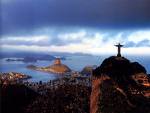
Michael graduated from the United States Naval Academy in June 1966. After completing pilot training and replacement training in the McDonnell F-4J Phantom aircraft, he reported to Fighter Squadron 96 operating from NAS Miramar, California. The squadron deployed to the Vietnam conflict in USS ENTERPRISE in 1969 and in USS AMERICA in 1970.
In 1971 Michael accepted the Olmsted Scholarship and commenced graduate study at the Graduate Institute of International and Development Studies, University of Geneva, Switzerland, where he earned the licence ès sciences politiques (études internationales) [equivalent to the M.A. in the United States].
On his return from graduate study in 1973, Michael underwent replacement training in the Navy’s newest fighter aircraft, the Grumman F-14A Tomcat and joined Fighter Squadron 2 as it prepared for its initial operational deployment. He remained with that squadron through four years and two deployments to the Western Pacific in USS ENTERPRISE. The squadron participated in Operation Frequent Wind, the evacuation of Saigon, in April 1975.
Michael was assigned to a staff billet in the Office of the Chief of Naval Operations in August 1977. He moved to the Office of the Secretary of Defense in early 1979, and in all spent three years as an action officer in national security affairs in the two staffs.
In 1980, Michael was selected to command an F-14 squadron and reported for refresher training at NAS Oceana, VA. He reported to Fighter Squadron 41 as Executive Officer in 1981 and assumed command of the squadron in June 1982. The squadron made two deployments to the Mediterranean Sea in USS NIMITZ and participated in the Fall 1981 operations in the Gulf of Sidra that resulted in the shoot-down of two Libyan fighters.
Upon completion of his command tour Michael reported to USS DWIGHT D. EISENHOWER where he served as Combat Information Center Officer, Operations Officer and Navigator. He was also the Shipyard Coordinator for the ship’s 18-month overhaul in the yards of Newport News Shipbuilding Company. He left the ship in 1987 and served three years on the staff of the Commander, Naval Air Force, U. S. Atlantic Fleet, before reporting to Boston University as Professor of Naval Science and Commanding Officer of the NROTC Unit. In 1991, he was also appointed Visiting Professor of Naval Science at the Massachusetts Institute of Technology.
In his career, Michael accumulated over 2,500 hours of flight time and over 900 carrier landings. Twice units in which he was serving received the Battle Efficiency “E” as the best unit of their respective type in the Fleet. His personal awards include the Legion of Merit, Defense Meritorious Service Medal, Air Medal and several other awards and commendations.

My home away from home

My ride

Rio de Janeiro
Hong Kong